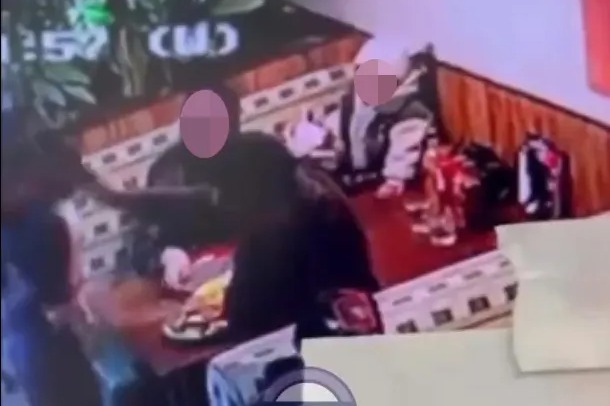The incident, captured on CCTV and subsequently disseminated widely across social media platforms, depicts a young waitress, identified as Zahra, serving a family—a man, a woman, and a child—at a Nando’s restaurant in Stratford. As she places their food on the table, the man abruptly lunges forward and strikes her in the face with a plate. The impact is clearly visible, and the waitress reacts with a startled exclamation before quickly retreating from the scene. The family then exits the restaurant, leaving stunned onlookers in their wake. This seemingly unprovoked act of aggression quickly went viral, sparking widespread outrage and condemnation online.
The incident’s virality brought increased attention to the initial handling of the case by the Metropolitan Police. Zahra, in a seven-minute video posted on TikTok, expressed her deep disappointment with the police response, describing herself as being “grossly let down.” She criticized what she perceived as a lack of prompt action and thorough investigation following her initial report of the assault. Her video served not only as a personal account of the ordeal but also as a broader commentary on the issues of violence against women and the perceived inadequacies in addressing such incidents. The public outcry, fueled by both the video evidence and Zahra’s testimony, pressured the Metropolitan Police to re-evaluate their handling of the case.
The Metropolitan Police, acknowledging the public concern and the shortcomings in their initial response, subsequently reopened the investigation. They publicly admitted that the initial report of assault was not progressed promptly and committed to determining the reasons behind this lapse. The police acknowledged that their initial response did not meet the expected standards of service owed to Londoners. This public acknowledgment of their failings came after mounting pressure from social media users and Zahra’s own vocal criticism. The renewed investigation ultimately led to the arrest of a 32-year-old man in connection with the assault.
Zahra’s seven-minute TikTok video provided a crucial platform for her to share her experience and voice her frustrations. She described the incident as “savage” and highlighted the emotional toll it took on her. Beyond recounting the specific events, she connected her experience to the broader conversation about violence against women, emphasizing the urgency of addressing these issues and holding perpetrators accountable. She also expressed gratitude for the overwhelming support she received online, which undoubtedly played a role in amplifying her story and pressuring authorities to take action. Her brave decision to speak out transformed her personal experience into a catalyst for change and a call for improved responses to such incidents.
The assault on Zahra, captured in the viral video, highlights the vulnerability of service workers, who often face the risk of verbal abuse and, in rarer cases, physical assault from customers. This incident underscores the need for better protections and support systems for those working in the service industry. It also serves as a reminder of the importance of bystander intervention and creating a culture of zero tolerance for violence and harassment in public spaces. The widespread condemnation of the man’s actions demonstrates a growing societal intolerance for such behavior, but also raises questions about the underlying factors that contribute to such displays of aggression.
This incident, from the initial assault to the subsequent arrest, unfolded under the intense scrutiny of social media. The viral spread of the CCTV footage played a significant role in bringing the incident to light and holding authorities accountable. Zahra’s use of TikTok to share her story and criticize the police response further amplified the public outcry. This case exemplifies the growing power of social media as a tool for raising awareness, demanding justice, and driving societal change. It also highlights the potential of online platforms to empower victims and give voice to those who might otherwise be silenced. However, the incident also raises questions about the responsible use of social media, the potential for online harassment, and the ethical considerations of sharing sensitive content involving individuals who may not have consented to their depiction.


